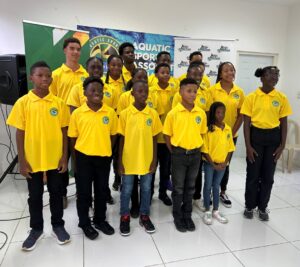Drone Soccer — revolutionising STEAM education
IN an era in which technology is advancing at an unprecedented pace, educational institutions are being forced to adapt their teaching methods to prepare students for the future.
One area that has seen remarkable growth in recent years is the integration of drones into STEAM (science, technology, engineering, arts, and mathematics) education.
These aerial vehicles are not just gadgets for enthusiasts; they are powerful educational tools that are transforming the way students learn about STEM.
Dervon McKellop, president of the Jamaica Drone Soccer Initiative, and DRIFT Drones in School Programme Tour, said technology is dramatically changing education, making it more accessible, engaging, and personalised.
According to McKellop, this is achieved through various advancements like online learning platforms, artificial intelligence-powered learning tools, and immersive technologies — which enhance traditional teaching methods and offer new ways to learn.
“STEAM is revolutionising education by offering an interdisciplinary approach that integrates these subjects, fostering critical thinking, problem-solving skills, and innovation. Our objectives are centred on education, youth engagement, technology integration, and workforce development,” McKellop said.
Drones, once primarily associated with military and recreational use, have found a new role in education.
Educational institutions, from primary schools to universities, are incorporating drones into their curricula to engage students in hands-on learning experiences.
The versatility of drones allows educators to teach a wide range of STEAM concepts across various disciplines.
McKellop said one of the significant advantages of using drones is their ability to bridge theoretical concepts with real-world applications.
“For example, students studying physics can learn about aerodynamics by understanding how drones achieve lift and manoeuvre through the air. Similarly, students interested in engineering can explore the design and construction of drones, gaining insights into mechanics, materials, and electronics,” added McKellop.
He noted that the application of drones in education extend beyond just one discipline.
McKellop pointed to the example of geography students who can capture aerial footage with the drone, analyse the data, and include this in class discussions and comparisons.
“This may involve identifying geographical features, measuring distances, or creating maps using geographic information systems (GIS) software, encouraging students to compare the drone imagery with other sources, such as maps or satellite images, to gain a deeper understanding of the landscape,” he said.
McKellop noted that as technology continues to advance, drones are becoming increasingly prevalent in various industries, from agriculture and construction to transportation and emergency services.
“By introducing students to drones in an educational setting, we are preparing them for the technological landscape they will encounter in the workforce. Whether they pursue careers in robotics, aerospace engineering, data analytics, or any other STEAM field, the skills and knowledge gained through drone education will serve them well in the future,” McKellop said.
McKellop and his team have been implementing STEAM, through the Jamaica Drone Soccer Initiative and the Drift Drones in School Programme Tour, two innovative activities that blend the excitement of sports with the latest in drone technology.
This interactive experience offers more than just fun; it is a powerful educational tool designed to inspire students and open doors to future career opportunities.
Drone Soccer makes complex STEAM concepts accessible and exciting. Under Drone Soccer, students explore principles of aerodynamics, technology integration, and engineering through hands-on participation.
It is a team-based sport where players pilot small, lightweight drones inside protective spherical cages, aiming to score points by flying their drone through a goal hoop suspended in the air.
Unlike drone racing, which focuses purely on speed, drone soccer emphasises team strategy, passing, blocking, and offence or defence coordination — much like traditional soccer but in three dimensions.
The sport, commercialised in 2016 by the Federation of International Dronesoccer Association (FIDA), aims to be inclusive, appealing to players of all ages and genders.
Its accessibility, and STEAM applications, have made it particularly popular in educational settings, fostering skills in aviation, engineering, and collaboration.
On a recent tour of Jamaica, several schools including primary and high schools were exposed to the dynamics of drone soccer, and McKellop said the response was overwhelming and positive.
These institutions included Norman Gardens Primary, St George’s College and Wolmer’s Boys’ School.
“Drone Soccer prepares students for the future by aligning with national STEAM curriculum standards, supporting project-based learning and interdisciplinary assessments, and offering a fun and competitive gateway to careers in aviation, robotics, AI, engineering, and tech entrepreneurship,” McKellop said.
He added that the sustainability of the Drone Soccer and DRIFT Drones in School programme depends on several key pillars including resource planning, curriculum alignment, community partnerships, and ongoing support.
“Schools do not need to create a new subject, the programme complements science, information technology, math, geography, English language, visual arts, and industrial technology, just to name a few.
“Lesson plans are modified to incorporate the drone as a learning tool, assessments, and learning outcomes aligned with national education standards and real-world applications making it easier for teachers to adopt and sustain,” McKellop said.
A student of Norman Gardens Primary School is shown how to control a drone as its versatility was used to teach a wide range of STEAM concepts across various disciplines.












